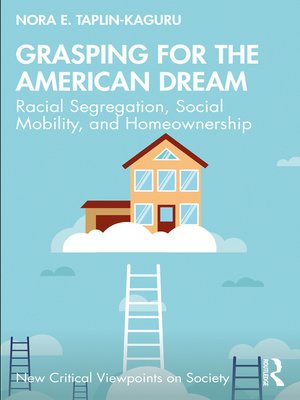Grasping for the American Dream
ebook ∣ Racial Segregation, Social Mobility, and Homeownership · New Critical Viewpoints on Society
By Nora E. Taplin-Kaguru

Sign up to save your library
With an OverDrive account, you can save your favorite libraries for at-a-glance information about availability. Find out more about OverDrive accounts.
Find this title in Libby, the library reading app by OverDrive.



Search for a digital library with this title
Title found at these libraries:
| Library Name | Distance |
|---|---|
| Loading... |
African American homebuyers continue to pay more for and get less from homeownership. This book explains the motivations for pursuing homeownership amongst working-class African Americans despite the structural conditions that make it less economically and socially rewarding for this group. Fervent adherence to the American Dream ideology amongst working-class African Americans makes them more vulnerable to exploitation in a structurally racist housing market. The book draws on qualitative interviews with sixty-eight African American aspiring homebuyers looking to buy a home in the Chicago metropolitan area to investigate the housing-search process and residential relocation decisions in the context of a racially segregated metropolitan region.
Working-class African Americans remained committed to homeownership, in part because of the moral status attached to achieving this goal. For African American homebuyers, success at the American Dream of homeownership is directly related to the long-standing dream of equality. For the aspiring homebuyers in this study, delayed homeownership was a practical problem for the same reasons, but they also experienced this as a personal failing, due to the strong cultural expectation in the United States that homeownership is a milestone that middle-class adults must achieve. Furthermore, despite using perfectly reasonable housing search strategies to locate homes in stable or improving racially integrated neighborhoods, the structure of racial segregation limits their agency in housing choices. Ultimately, policy solutions will need to address structural racism broadly and be attuned to the needs of both homeowners and renters.







